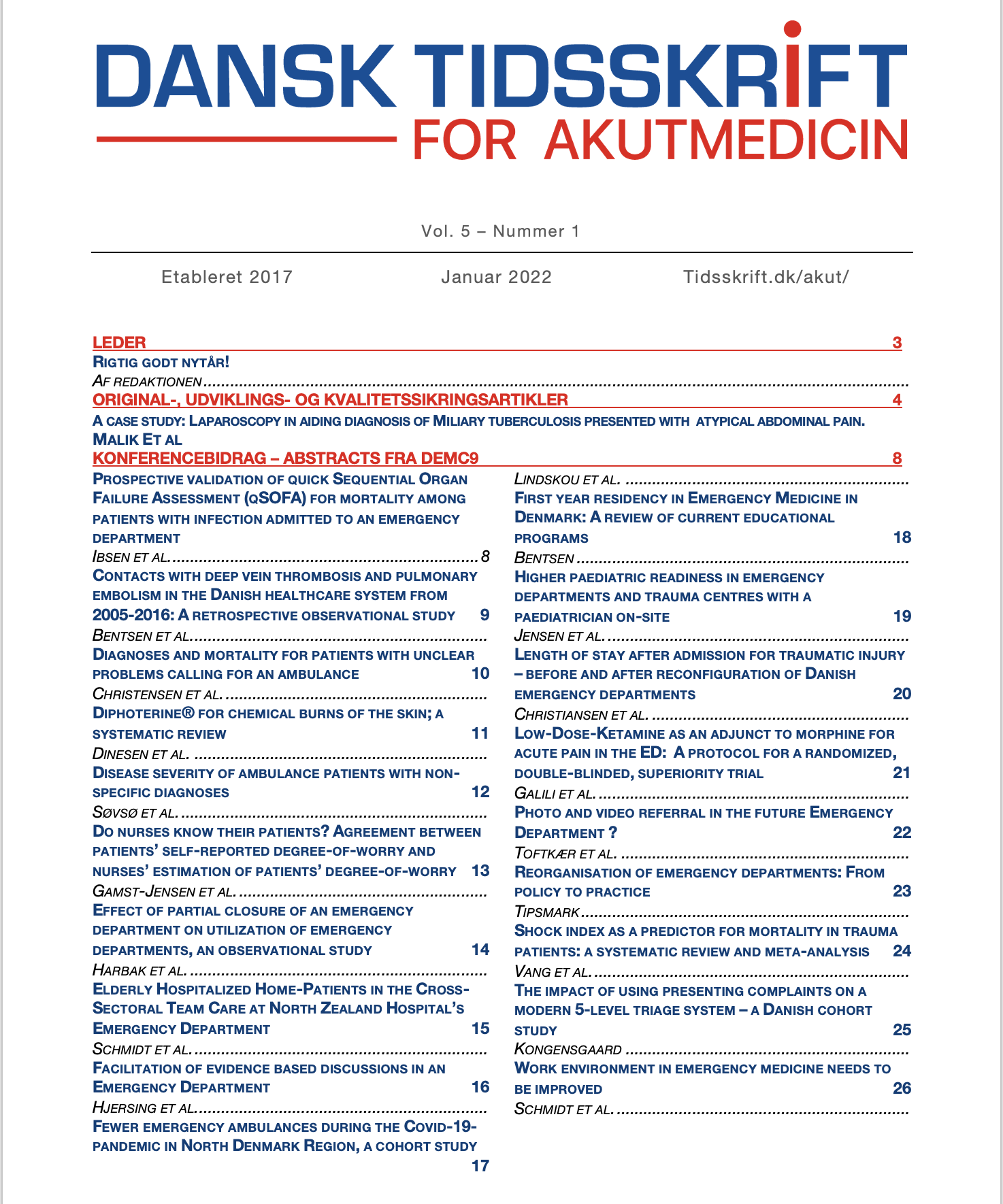Resumé
Emergency department (ED) and emergency medical services (EMS) contacts are increasing and one third of ED patients receive non-specific diagnoses (ICD-10 chapters R ‘symptoms and signs’ and Z ‘other factors’). We hypothesize that non-specific diagnoses may be assigned to 1) frail patients with potentially serious conditions presenting with unclear symptoms and 2) patients with unclear symptoms due to low disease acuity or severity. Thus, in EMS patients discharged with non-specific diagnoses, we investigated renewed contacts within 30 days, changes in diagnoses and corresponding changes in 30-day mortality.
Observational cohort study of patients brought to hospital after emergency call and discharged with an ICD-10 chapter Z or R diagnosis during 2016-2018 in the North Denmark Region. Mortality and renewed contacts (new contact within 30 days) were modelled by Poisson regression. Comorbidity groups was determined according to Charlson Comorbidity Index (CCI).
Of 73783 EMS patients with hospital contact following an 1-1-2 emergency call, 32% (N=24229) were assigned a non-specific diagnosis upon discharge. Median age 56.0 years (32.7;73.1), 48.9% were female and 65.7% had no comorbidity (CCI=0), 25.9% had moderate (CCI= 1-2) and 8.4% had high comorbidity (CCI: 3-). Mortality within 30 days was 2.9% and 2095 patients had a renewed contact. Of these, 59.8% received a specific ICD-10 diagnosis; circulatory (17.5%), injury/poisoning (12.0%), mental/behavioral (11.1%), respiratory (8.2%) and digestive diseases (6.2%). In renewed contacts, patients with different diagnoses had more than a twofold increase in 30-day mortality (adjusted RR (95%CI)): 2.52 (1.27-4.98), higher mean age (58.3 vs. 54.2) and high comorbidity was more frequent (14.9% vs. 7.7%) when compared to patients with non-specific diagnoses.
One third of included patients were assigned a non-specific diagnosis, and less than 10% had renewed contact within 30 days. Compared to patients with a non-specific diagnosis, patients given a specific ICD-10 diagnosis upon renewed contact had more comorbidity and more than a twofold increase in adjusted mortality risk. The most frequent specific diagnoses for renewed contact were circulatory diseases, injury/poisoning and mental/behavioral disorders. Most emergency ambulance patients with non-specific diagnoses had low mortality and no renewed contact, however 5% had potentially serious underlying conditions and high mortality.
Licenseret under en Creative Commons Kreditering 4.0 International-licens (CC BY 4.0).
© Forfatterne.

